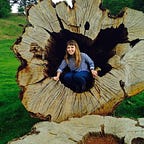3D object scans as a museum learning resource
I’ve been working with colleagues in the Digital and Learning teams at the Science Museum to develop a pilot website with 3D object scans for use in the classroom. We’re currently conducting an evaluation to investigate the potential applications for the resource. This is what we’ve learned so far from the process of creating the scans and from an initial research phase with teachers.
Object-based learning
Objects — both in museum collections and the ones we encounter in everyday life — can be incredibly engaging tools for learning. Using objects in teaching can help develop students’ observation and questioning skills, and enable them to see the relevance of science to their everyday lives and make personal connections using the stories behind the objects. We encourage educators to use objects to spark their students’ curiosity in science, both in the classroom and beyond.
To help educators and learners we’ve created various resources including image banks (images of objects in our collection, organised around themes), our Great Object Hunt activity and a tool called See, Link, Wonder which helps group leaders to facilitate object engagement. Most recently we’ve been exploring the possibilities of using 3D scanning to bring Science Museum objects to a wider audience in new ways.
Creating the resource
We scanned a number of objects from Mathematics: the Winton Gallery while the gallery was being assembled and brought them together within a resource for teachers on this web page: https://beta.sciencemuseum.org.uk/learning
Two of the objects (an Enigma machine and a catalytic converter) were rendered using photogrammetry and the others (a marine sextant and a storm surge modelling machine) as rotational photographs. The objects were selected according to a number of criteria: size (would they fit in the photo studio?), availability (had they already been placed in cases in the gallery?), application to the National Curriculum, and material (shiny materials don’t scan well). The photogrammetry was expertly completed by Tom Flynn for Museum in a Box.
Photogrammetry of Museum objects
The objects were shot in the Museum photo studio, where the photographer took hundreds of images of every available surface of each object. He then used specialist software to compile point clouds of each object, generate 3D surface models and add textures to create interactive 3D models which are hosted on 3D platform Sketchfab. Unfortunately, the GPS receiver you see here didn’t translate successfully to a point cloud — we’d hoped its material would be suitable for scanning but sadly it turned out to be too shiny as well as too plain a surface.
Members of the Science Museum Learning team we were able to add annotations to the objects within the Sketchfab interface, allowing users to click specific features to find out more about how each object works.
Rotational photography
Other objects were photographed on turntables, producing up to 720 images per rotation which, when viewed in sequence, can be played like an animation or viewed frame by frame to give the user a sense of rotating the object. We’ve looked at various ways to embed these images within web pages (find examples on this page from the Mathematics Gallery website). In our learning resource we embedded 20 of these images in-browser using software called WebRotate, to minimise the page load time. Again, we were able to add clickable hotspots within the WebRotate Editor to specific sections of specific frames, but with more limited functionality than Sketchfab offers.
Learning resources
We packaged our four objects with information about object-based learning, ideas for using the scans in the classroom, and background information and curriculum links for each. Owing to the limitations of the page template we were working with, all the scans live together on a single web page, but teacher feedback confirmed that they would be better presented as separate pages.
Teacher response
We’ve shared the resource with teachers at a number of our Teacher Zone events during Lates evening openings, and as part of a formal investigation with a small sample of participants including telephone interviews. Overall, the response from teachers has been extremely positive. Teachers are intrigued by the scans and think they offer a much more engaging proposition than a simple 2D photograph. There is a sense that the full 3D scans provide the opportunity to ‘virtually handle’ historic objects. All agreed that the full 3D scans are more appealing than the rotational photographs, but they also enjoyed the simple navigation of the rotational marine sextant which can be viewed ‘step by step’.
Teachers felt confident navigating the resource and could see its application in multiple classroom contexts, but they agreed that it would work best as a topic introduction or summary. Some teachers suggested that it could work well in the context of a ‘mystery object’ type activity, while others mentioned the ‘flipped classroom’ approach where students explore something and report back what they discovered during class. Throughout the evaluation teachers have expressed interest in accessing a greater number and wider variety of objects and accompanying resources. There was a particular interest in object covering the biology curriculum, such as biology research tools.
What’s next
We’re looking forward to hearing the outcome of a second round of evaluation, this time with a focus on trialing the resource in real classroom situations and with a wider sample of teachers. How do students respond to the 3D scans in the resource, and what barriers do they encounter? We are interested in finding out what the best contexts for this type of resource are for learning and how we can support teachers in their work using this technology. Look out for another post later this year.
